June 27, 2024 By Muhammad Ali 9 minutes read

Centrifugal pumps are one of the most widely used types of pumps in industry today. They are found in applications ranging from water supply and wastewater treatment to chemical processing and power generation.
Centrifugal pumps are mechanical devices designed to move fluids by converting rotational energy into fluid energy. This rotational energy typically comes from an engine or electric motor. The primary function of a centrifugal pump is to transfer fluid from one place to another by using a rotating impeller.
In this article, we’ll dive deeper into how centrifugal pumps work, their key components, common applications, and important considerations for selecting and operating them.
Centrifugal pumps are mechanical devices used to transport fluids by converting mechanical energy from an external source, such as an electric motor, into kinetic energy in the fluid being pumped.
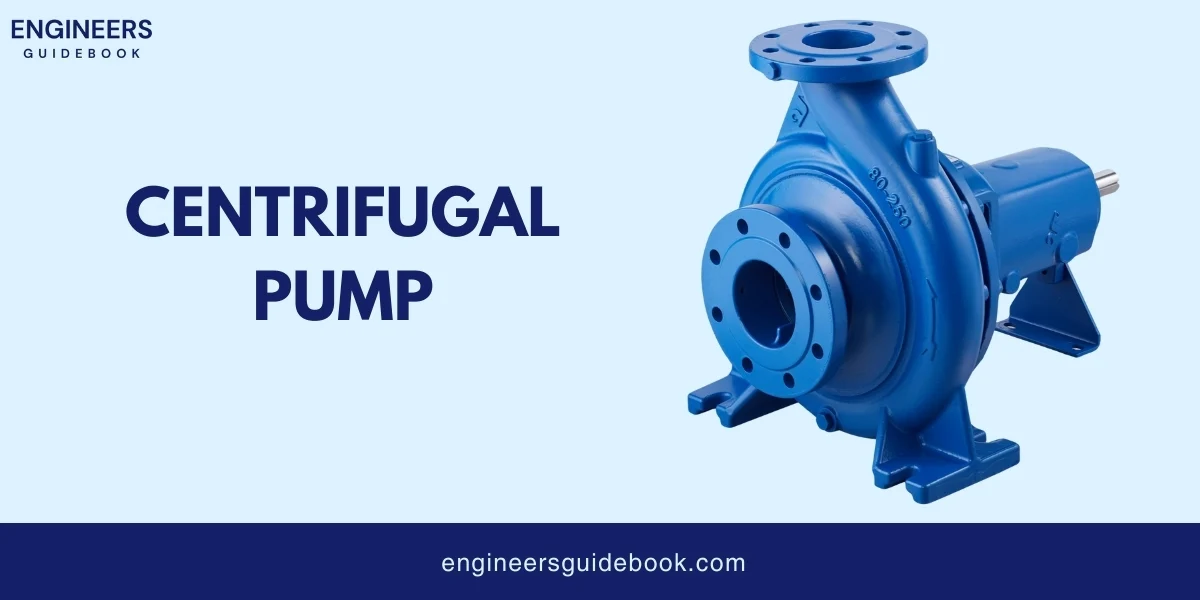
Centrifugal pumps have an interesting history:
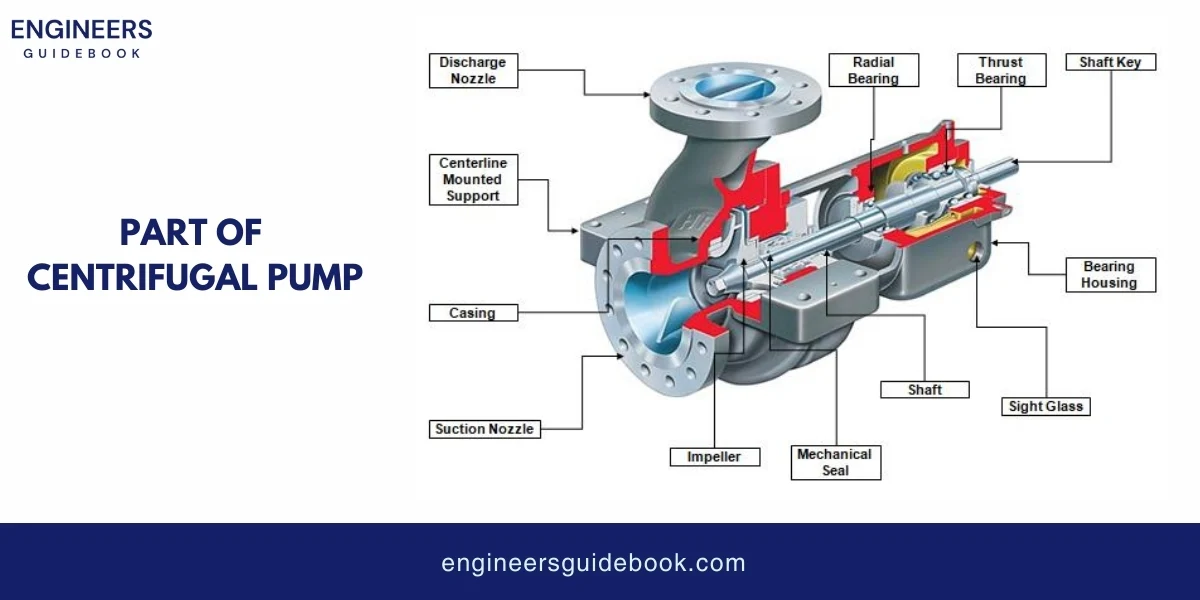
The impeller is the heart of a centrifugal pump. It spins to move the liquid. Impellers are of three types.
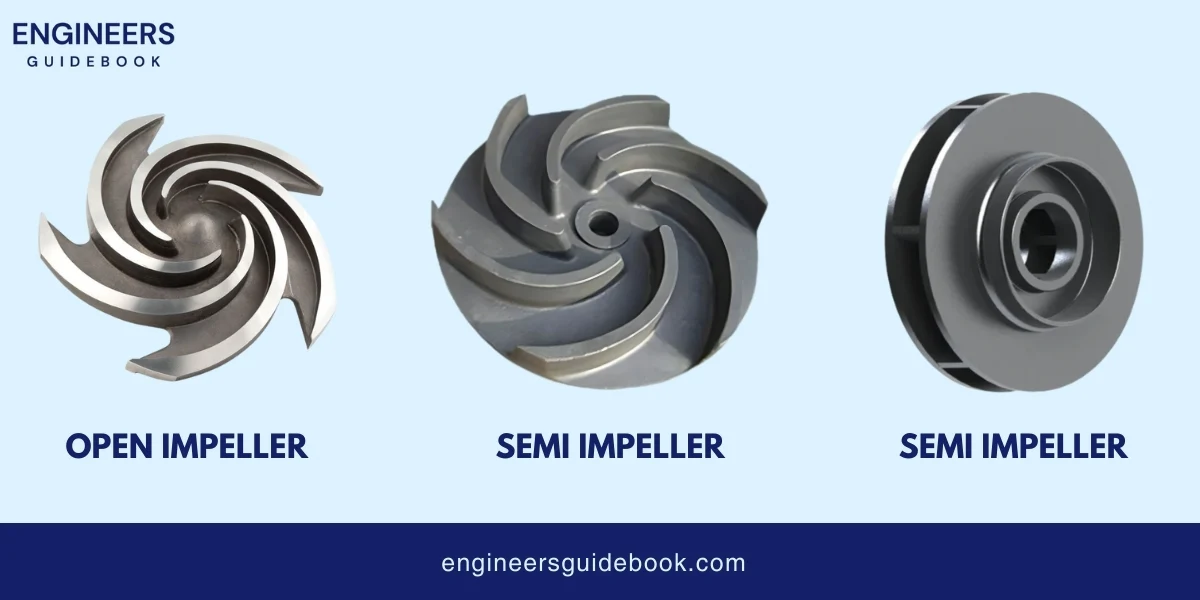
The casing is the outer part of the pump that holds everything together.
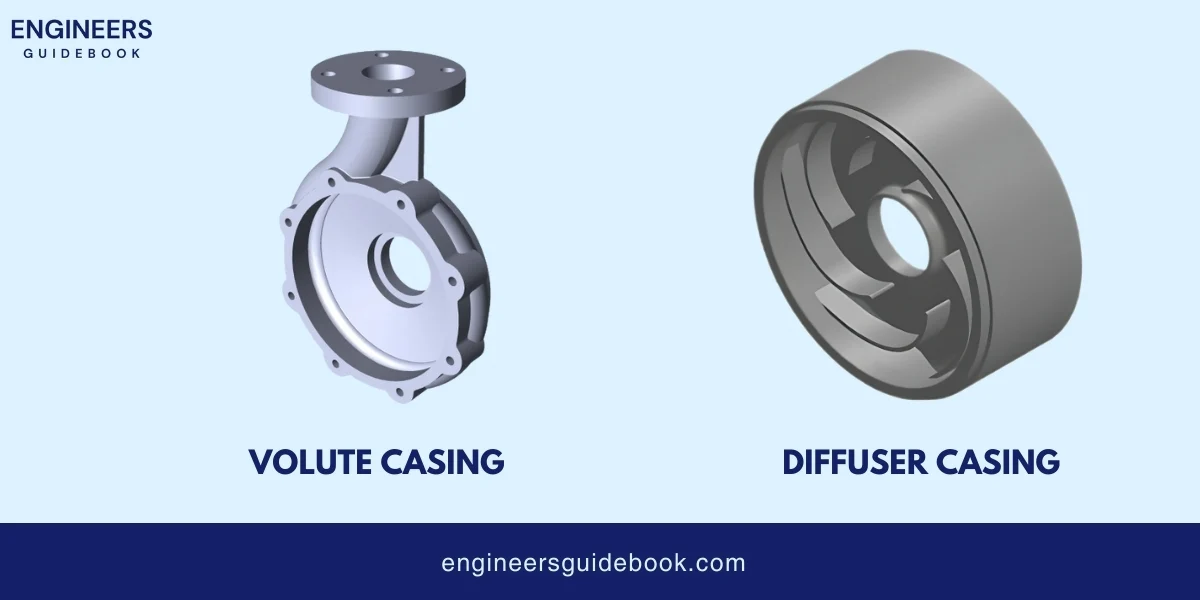
The shaft is a rod that holds the impeller and makes it spin.
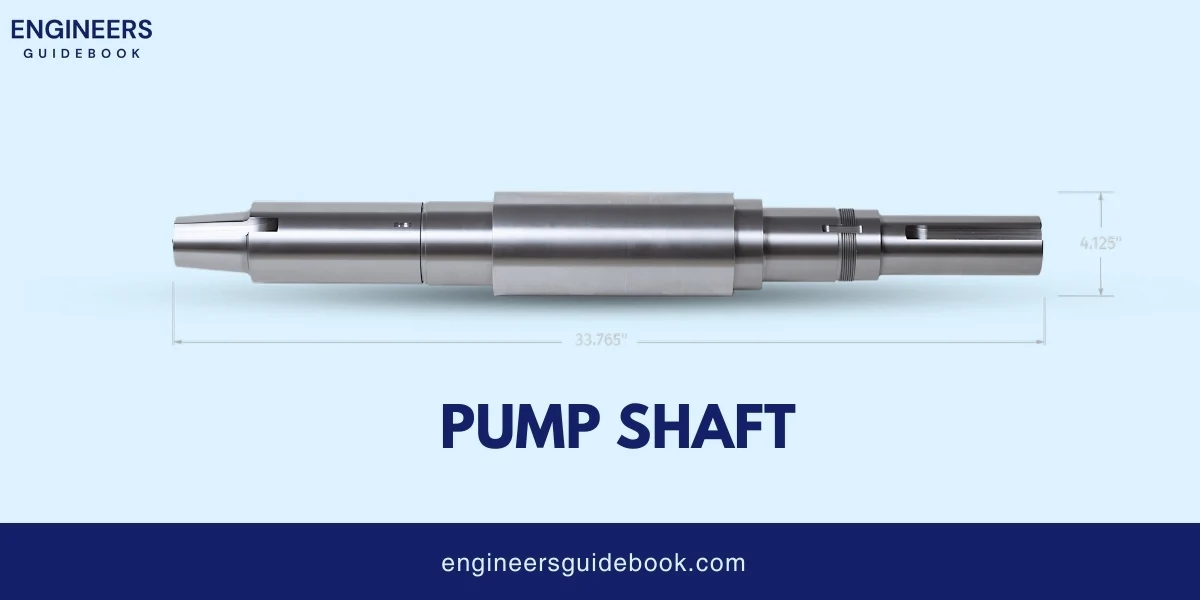
Bearings help the shaft spin easily without wearing out.
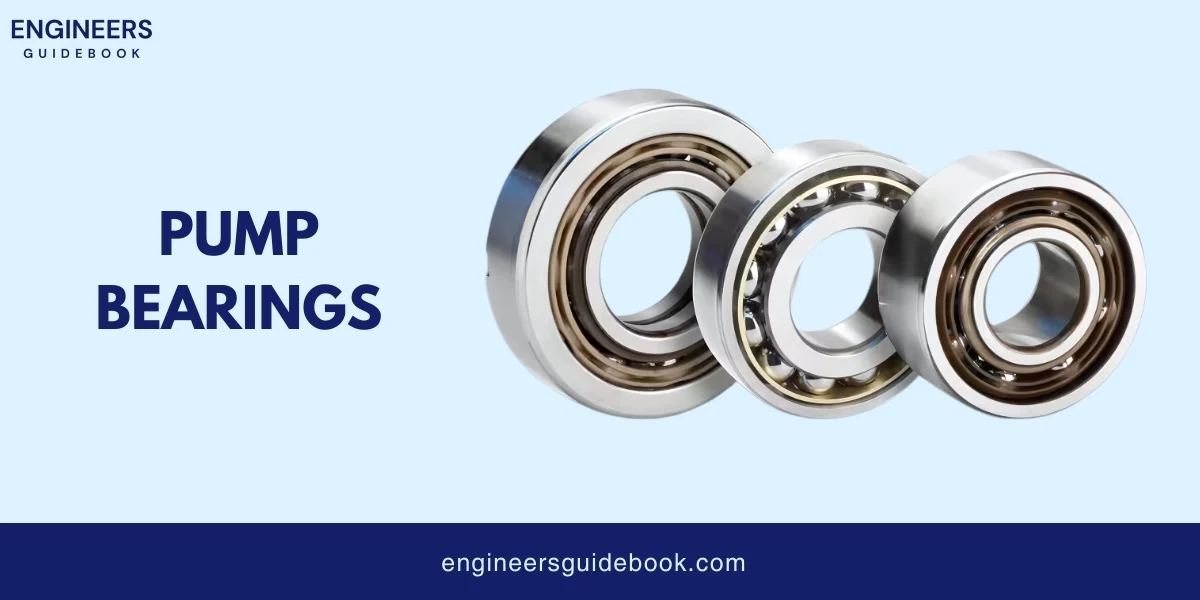
Seals prevent fluid from leaking out of the pump casing, ensuring efficient operation and preventing environmental contamination. They also protect internal components from damage due to fluid exposure.
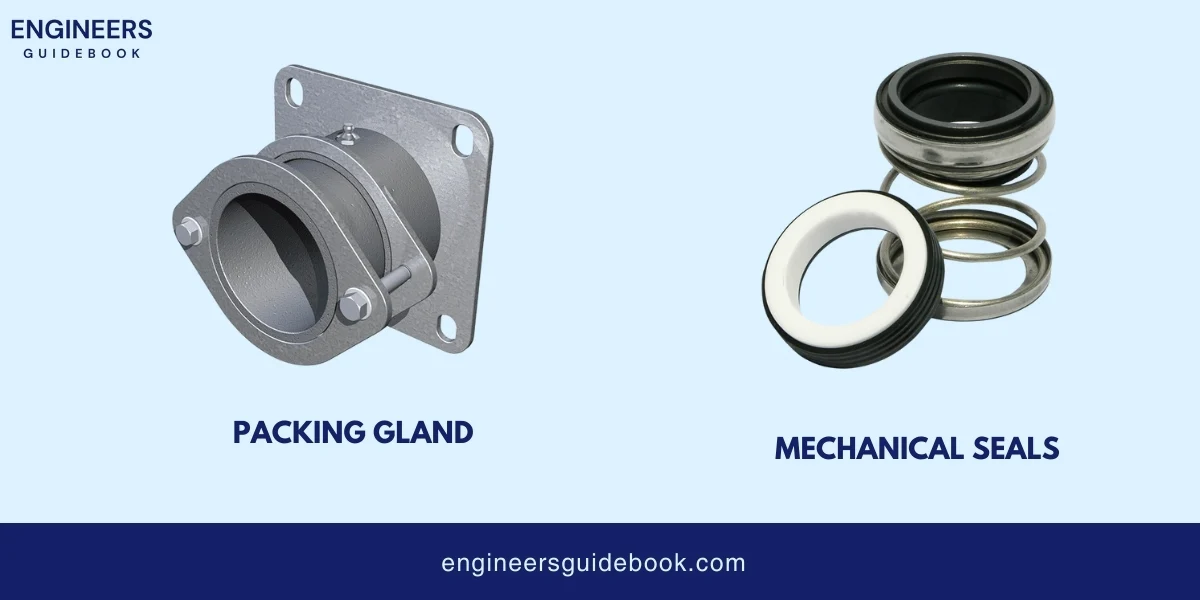
Wear rings reduce wear between the impeller and casing, maintain efficient performance, and extend the pump’s lifespan.
Wear rings are typically made from hardened metals like stainless steel or bronze, or wear-resistant plastics.

Couplings are used to connect the pump shaft to the motor shaft, transmit power, and accommodate misalignment. Couplings help reduce vibration and protect components from damage.
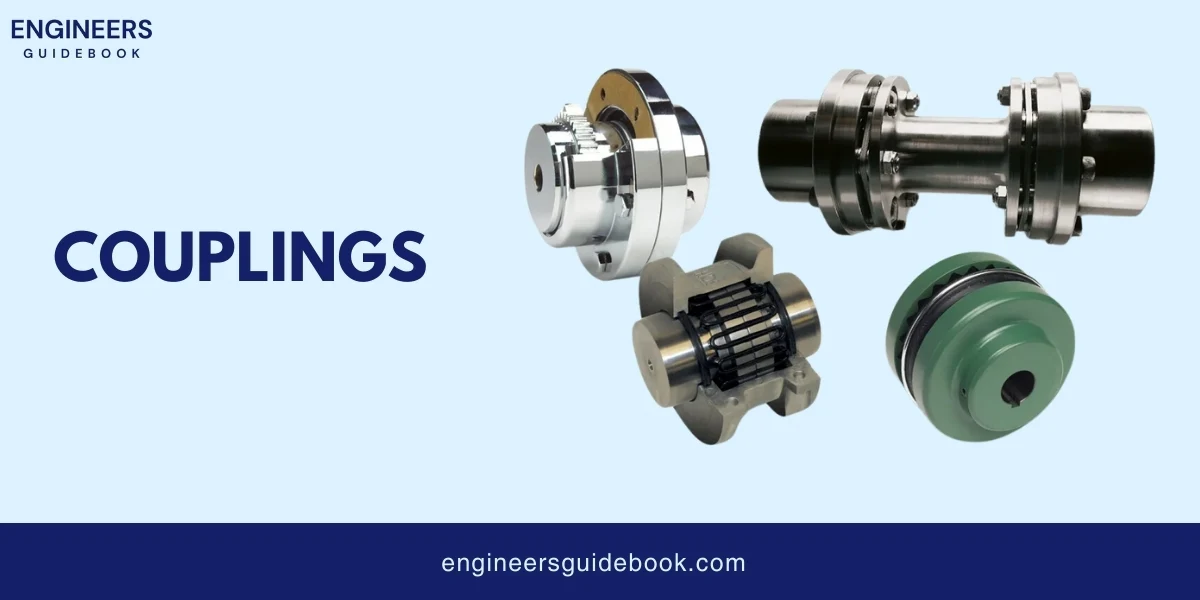
The base Plate and Frame provide stability and support to the pump and motor and ensure proper alignment. They also help reduce vibration and noise.
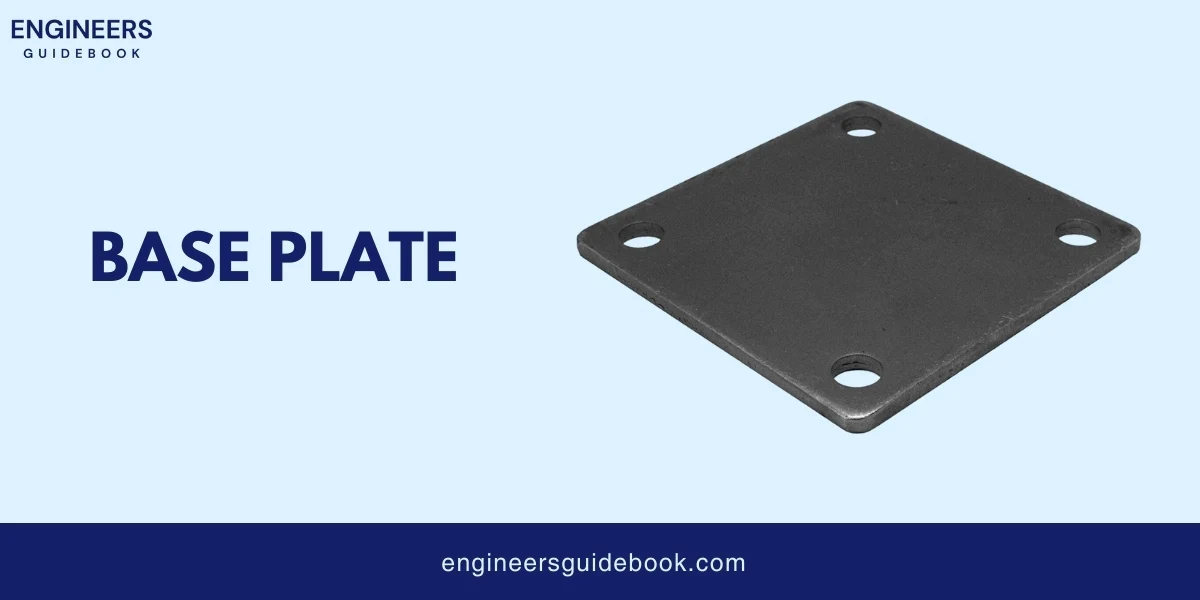
A centrifugal pump operates by converting mechanical energy from a motor into kinetic energy in the form of fluid movement. This is achieved by using a rotating impeller that increases the velocity and pressure of the fluid, pushing it through the pump and into the discharge pipe.
Centrifugal force is the key principle behind the operation of a centrifugal pump. As the impeller rotates, it creates a centrifugal force that pushes the fluid outward from the center of rotation.
This force causes the fluid to move rapidly along the vanes of the impeller, gaining velocity and pressure as it travels. The centrifugal force ensures that the fluid is continuously pushed outward, maintaining a steady flow through the pump.
The centrifugal pump’s primary function is to convert mechanical energy from the motor into fluid energy. This involves two main energy conversions:
In radial flow pumps, the fluid enters the impeller at the center and is discharged perpendicularly to the shaft.
In axial flow pumps, the fluid flows parallel to the pump shaft, similar to a propeller in a pipe.
Mixed flow pumps combine features of both radial and axial flow pumps. The fluid is discharged at an angle, producing radial and axial components.
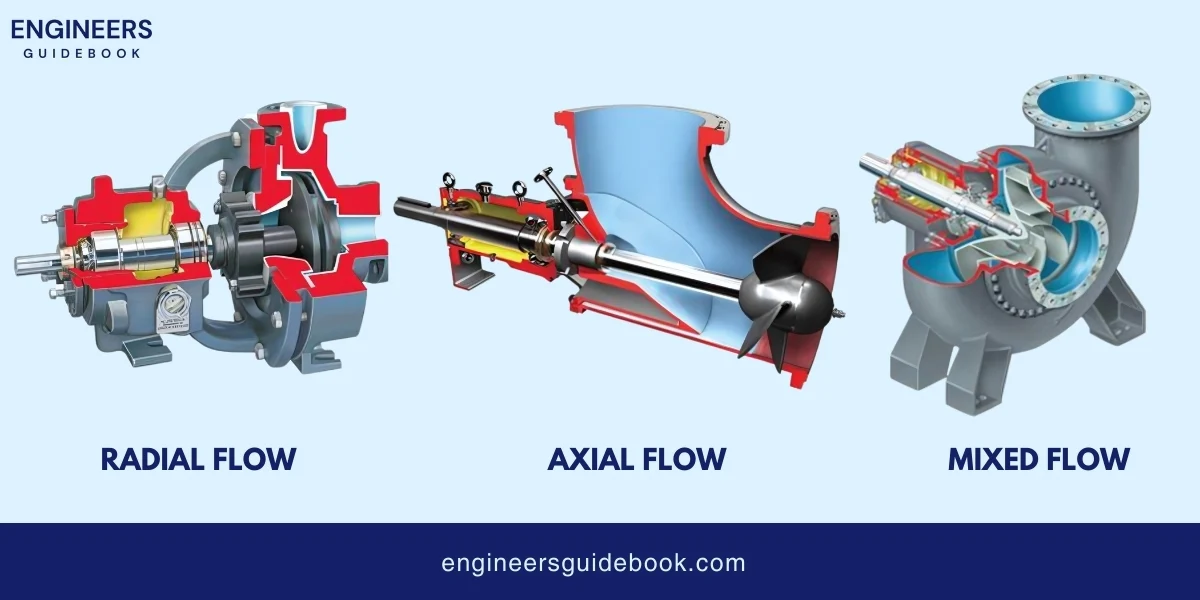
Impellers with vanes that are not enclosed by sidewalls are known as open impellers.
Impellers with vanes that have one side enclosed.
Impellers that are fully enclosed by sidewalls are called closed impellers.

Centrifugal Pumps with only one impeller are called single-stage pumps.
Centrifugal pumps that have with multiple impellers in series.
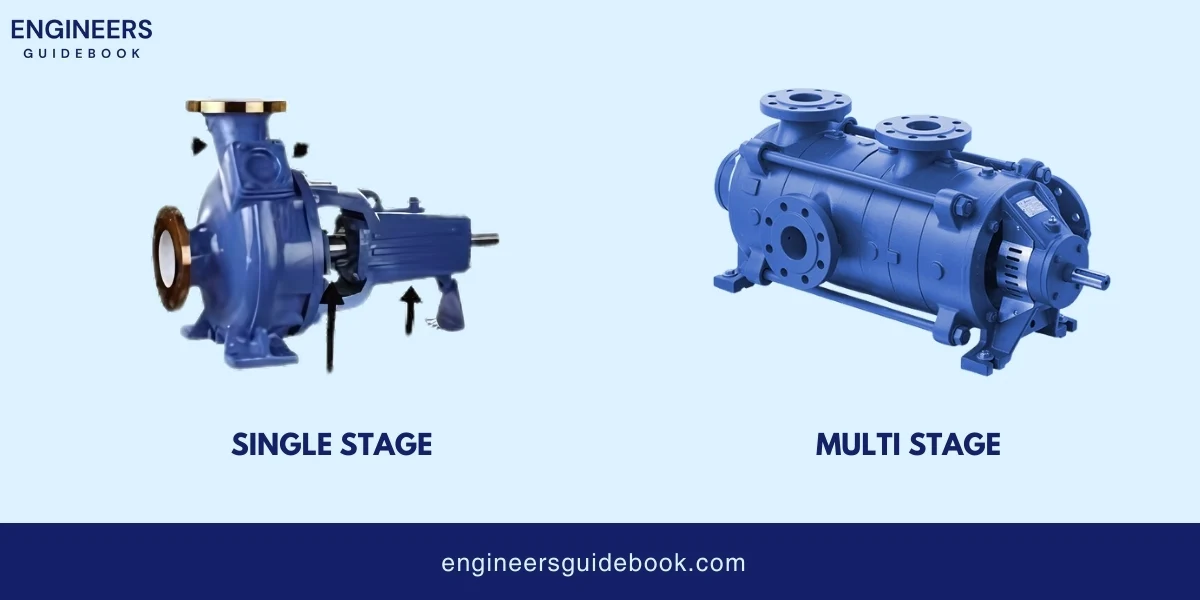
The casing is split horizontally, making it easy to open and service the pump without disturbing the piping.
The casing is split vertically, often used in high-pressure applications.
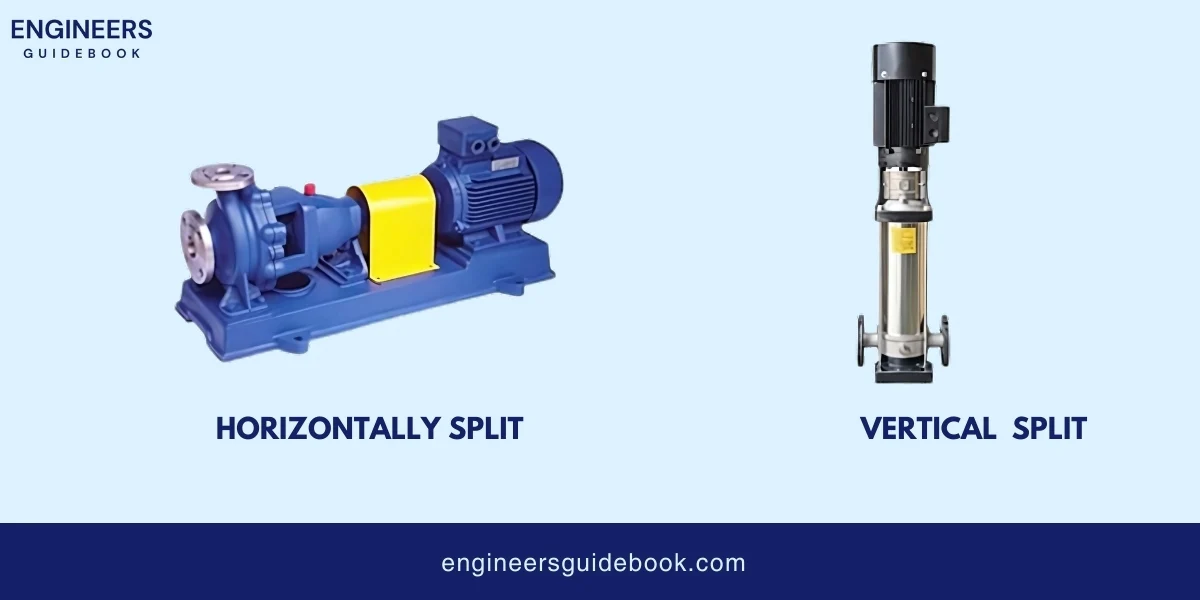
Designed to re-prime themselves when initially filled with fluid.
Designed to operate while fully submerged in the fluid being pumped.
Use a magnetic coupling to transmit torque to the impeller without a direct mechanical connection.
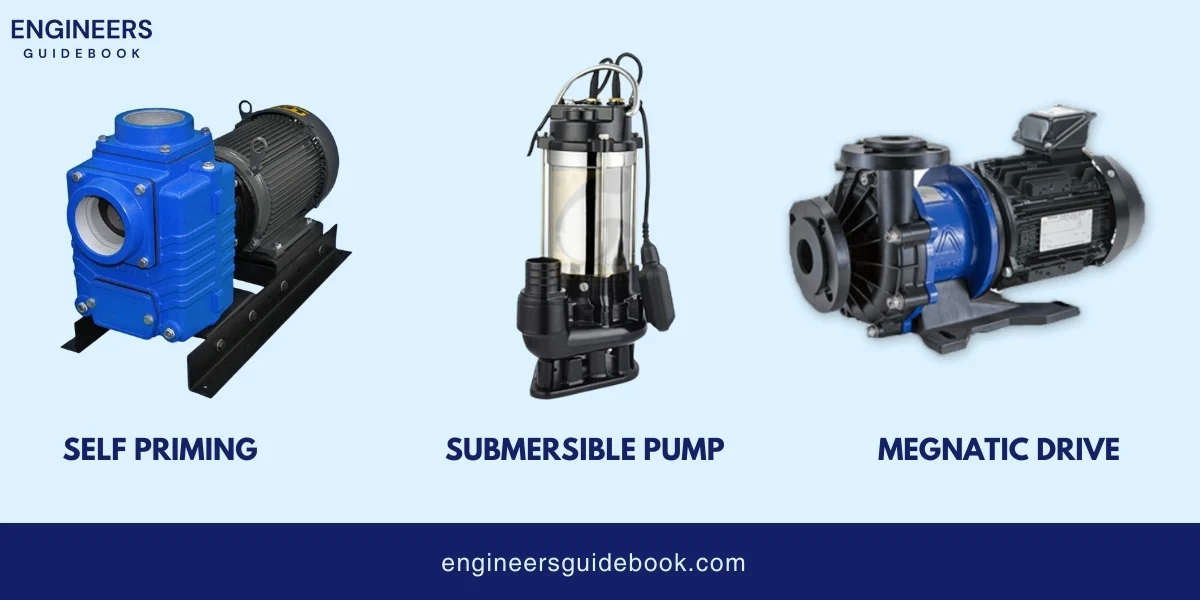
Definition:
The flow rate (Q) is the volume of fluid that passes through the pump per unit of time. It is usually measured in cubic meters per hour (m³/h) or gallons per minute (GPM).
Q=A×V
Where:
Definition:
The head (H) is the height at which a pump can raise the fluid. It is measured in meters (m) or feet (ft).
H=Pρ × g + V²/2g + Z
Where:
Definition:
The power consumption (P) of a pump is the amount of energy required to move the fluid. It is usually measured in kilowatts (kW) or horsepower (HP).
P= Q × H × ρ × g / η
Where:
The efficiency (η) of a pump is the ratio of the useful power output to the power input.
η= Pout / Pin
Where:
NPSH is a measure of the pressure available at the pump suction to prevent cavitation.
NPSH = Patm / ρ×g + V²/ 2g − Hf − Pv / ρ×g
Where:
Specific speed is a dimensionless number that describes the geometry of a pump’s impeller.
Ns = N × Sqr. root Q / H³/4
Where:
1. High Flow Rates: Centrifugal pumps are known for their ability to handle high flow rates efficiently.
2. Continuous Flow: One of the significant advantages of centrifugal pumps is their ability to provide a steady and continuous flow of fluid.
3. Low Maintenance: Like gear pumps Centrifugal pumps have a straightforward design with fewer moving parts compared to other types of pumps.
4. Handle Liquids with Suspended Solids:
Many centrifugal pumps, especially those with open or semi-open impellers, can handle liquids containing suspended solids.
5. Cost-Effectiveness: Centrifugal pumps are cost-effective solutions for high-flow scenarios. Their ability to move large volumes of fluid efficiently reduces energy consumption and operational costs.
6. Wide Range of Applications:
Centrifugal pumps are versatile and can be used in a wide variety of applications.
1. Limited suction lift capability: Centrifugal pumps cannot effectively lift fluids from deep sources.
2. Potential for cavitation: Cavitation can occur if the pressure at the pump inlet drops too low, causing damage.
3. Reduced efficiency with viscous fluids: High-viscosity fluids decrease the pump’s efficiency and performance.
4. Sensitivity to changes in system conditions: Variations in flow or pressure can significantly affect pump performance.
5. Priming requirements for some designs: Certain centrifugal pumps need to be primed before operation to remove air and ensure proper functioning.
1. Water supply and distribution: Used to transport water in municipal and residential systems.
2. Wastewater treatment: Employed in the treatment and movement of sewage and industrial waste.
3. Oil and gas industry: Essential for extracting, refining, and transporting oil and gas.
4. Chemical processing: Handles the transfer of various chemicals in industrial processes.
5. Power generation plants: Circulates cooling water and feeds boilers.
6. HVAC systems: Helps circulate water for heating and cooling in buildings.
7. Agriculture and irrigation: Provides water for crop irrigation and livestock.
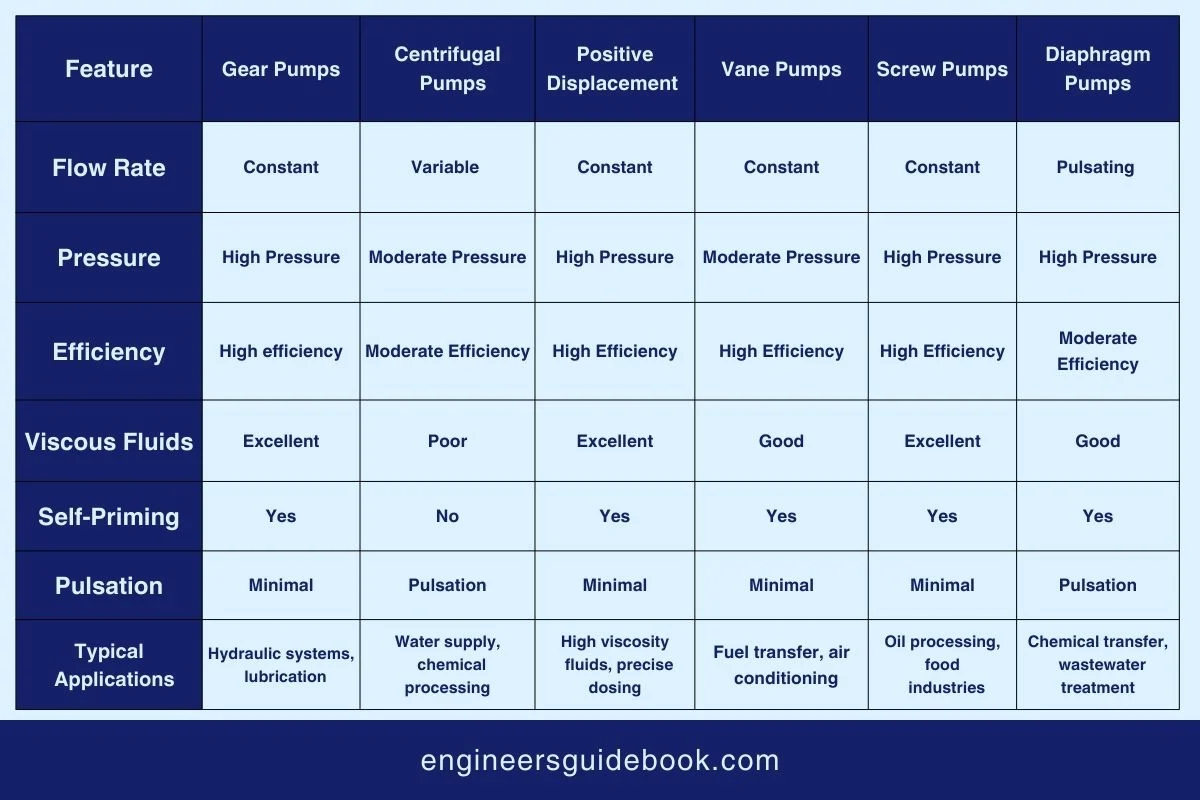
Factors like ambient temperature, humidity, and potential exposure to chemicals or explosive materials could affect pump operation.
Ensuring the pump materials (like stainless steel or plastic) are suitable for the fluid and the environmental conditions to avoid corrosion and wear.
Selecting a pump that uses the least amount of energy to do the required job, saving costs and reducing environmental impact.
Considering not just the purchase price but also installation, maintenance, operation, and repair costs over the pump’s lifespan to ensure economic efficiency.
Centrifugal pumps are essential components in various industries due to their ability to handle high flow rates, provide steady continuous flow, and operate with a simple design.
Key aspects such as proper installation, alignment, regular monitoring, and maintenance are crucial for their optimal performance.
Addressing common issues like cavitation, mechanical seal failure, and bearing failures through proper troubleshooting enhances the longevity and reliability of these pumps.
A centrifugal pump is a mechanical device that uses rotational energy to move fluid through a system. It operates by converting rotational kinetic energy, typically from a motor, into hydrodynamic energy of the fluid flow.
The main components include the impeller, casing, shaft, bearings, and mechanical seal. The impeller transfers energy to the fluid, while the casing directs the flow.
Efficiency is calculated using the formula:
Efficiency = Output Power / Input Power × 100
Output power is the hydraulic power delivered to the fluid, and input power is the power supplied to the pump.
Centrifugal pumps are used in water supply systems, sewage treatment, chemical processing, oil and gas industries, irrigation, and HVAC systems.
Selection depends on factors like fluid type, flow rate, pressure requirements, and system design. Consult pump performance curves and specifications to choose the right model.
Single-stage pumps have one impeller, suitable for low-pressure applications. Multi-stage pumps have multiple impellers, increasing pressure output for high-pressure applications.
Regular maintenance includes checking for leaks, inspecting bearings and seals, ensuring proper lubrication, and cleaning the impeller and casing.
Common issues include cavitation, overheating, and leaks. Troubleshooting tips involve checking for blockages, ensuring proper alignment, and verifying fluid levels.
Impeller design influences the flow rate and pressure. Different designs, like radial, axial, or mixed-flow impellers, are chosen based on the specific application and performance requirements.
Ensure proper installation, follow manufacturer guidelines, wear appropriate personal protective equipment (PPE), and regularly inspect and maintain the pump.
Cavitation occurs when vapor bubbles form in the liquid being pumped, often due to low pressure or high temperature, causing noise and potential damage to the impeller.
The volute is the casing that collects fluid discharged by the impeller, converting kinetic energy into pressure energy.
NPSH required is specified by the pump manufacturer and indicates the minimum pressure required to prevent cavitation.

Muhammad Ali holds a PhD in Mechanical Engineering from MIT and is currently conducting groundbreaking research on sustainable energy systems. His innovative work in renewable energy integration has earned him numerous accolades in the engineering community.
Explore the Engineer’s Guidebook! Find the latest engineering tips, industry insights, and creative projects. Get inspired and fuel your passion for engineering.
© 2023-2024 Engineer’s Guidebook. All rights reserved. Explore, Innovate, Engineer.